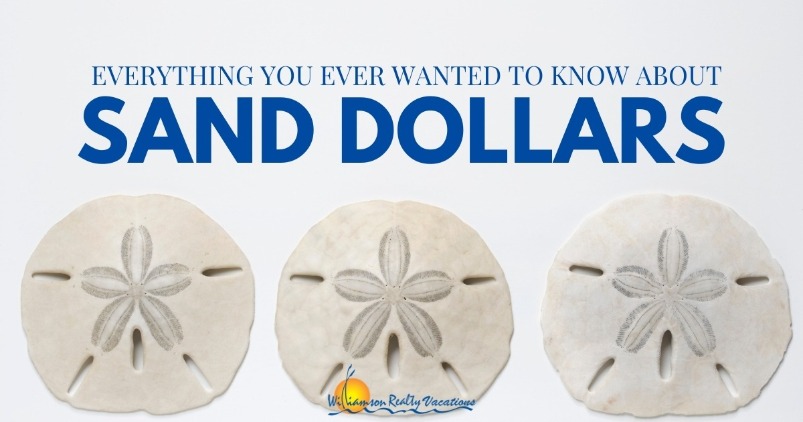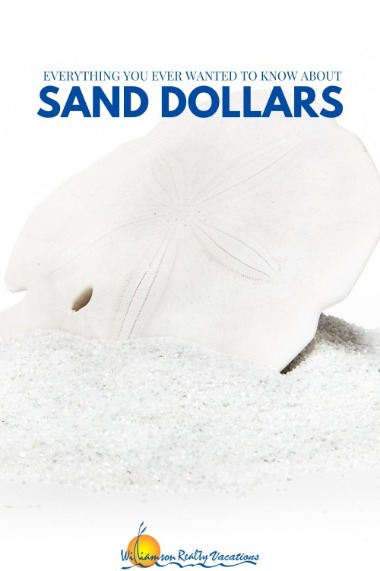
The beach is full of treasures, and beachcombers love the thrill of finding an intact Sand Dollar on the beach. Ocean Isle Beach has miles of beautiful beaches to explore and enjoy. Those who love searching for seashells, sea glass, and Sand Dollars will find Ocean Isle Beach to be a beachcomber’s paradise.
This week we talk about the prized (but elusive) Sand Dollar. If you are looking for a great activity to do with the kids, grab a bucket, take the hand of your child or grandchild and head out for a stroll along our beautiful beaches as we search for that perfect Sand Dollar.
What Is A Sand Dollar?
The common Sand Dollar that we are all familiar with is just another name for a particular type of “flattened” sea urchin. The sand dollar is most often found in the temperate and tropical waters of the Northern Hemisphere. On a good day of beach combing on Ocean Isle Beach you may find a dozen or more Sand Dollars. The typical Sand Dollar ranges in size from one to approximately four inches in diameter. For more information check out this short video.
Sand Dollar facts
Where Do They Live?
Sand Dollars live on sandy or muddy flat areas of the ocean floor in shallow water near land. They often live in colonies.
How To Tell Their Age.
Just like counting the rings on a tree stump, you can count the growth rings on the plates of the exoskeleton to see how old a Sand Dollar is. According to the aquarium, they usually live six to 10 years.
Their Pores Move Them.
Sand Dollars have five sets of pores arranged in a sort of petal pattern. They use these pores to move sea water into an internal water-vascular system which allows them to move. When the water gets rough, sand dollars lie flat or burrow under the sand to hold their ground.
The Starfish is A Close Relative
Sand Dollars are invertebrates in the class of marine animals known as echinoids, or spiny-skinned creatures. Their cousins include the sea lily, the sea cucumber, the starfish, and the sea urchin.
They Have Few Predators.
Due to having few edible parts and their relatively hard skeleton, few animals bother Sand Dollars. However, a few creatures will take up the challenge for an occasional Sand Dollar snack, including the ocean pout (an eel-like fish), California sheepheads, starry flounders and large pink sea stars.
They Aren’t Always White
When we see them in gift shops or on the beach they appear white. But, when they’re alive, they’re actually a purplish color and covered in tiny, flexible bristles. When they die, their skeletons are bleached by the sun and their small spines fade away. The familiar star pattern seen clearly on Sand Dollars is much more subtle when they’re alive.
Sand Dollars Have Hair?
The Sand Dollar’s tiny moveable spines, which encompass the entire shell, are what enable it to eat a diet of crustacean larvae, small copepods and algae.
Where to find Sand Dollars
On Ocean Isle Beach, beachcombers will have the best luck finding sand dollars at low tide, especially after a storm or during rough seas. Other great places to find them are along the piers, where the pillars create a unique wave action that helps wash them ashore.
Preserving your finds
The sun-bleached shells will be extremely fragile and will crumble or break easily. If appropriately preserved, Sand Dollars will last a long time. To preserve the sand dollars that you bring home, rinse them several times in fresh water, then soak them for 15 minutes in a water/bleach solution. When the Sand Dollars are dry, carefully paint them with a mixture that is half water and half white glue. The glue solution will make them less likely to break.
Are you ready to hit the beach and look for Sand Dollars? If you are, now is the perfect time to head to Ocean Isle Beach. Fall and winter are great times for hunting for Sand Dollars. Give us a call today at 800-727-9222 or click the button below to find your Ocean Isle Beach vacation home today.
Book an Ocean isle beach vacation!
Like and follow us on your favorite social media.



